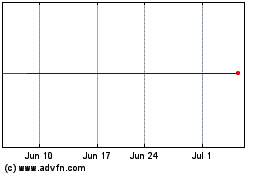Harris Corporation Weather Instrument and Ground System Key to US Government Next-Generation Weather Mission
November 14 2016 - 10:52AM
Business Wire
Highlights:
- Company plays critical role in NOAA’s
next-generation weather program
- Solutions direct the spacecraft,
operate instruments and process the data
- Improves severe weather forecasting for
U.S. government
Harris Corporation’s (NYSE:HRS) new Advanced Baseline Imager
(ABI) weather instrument and enterprise ground system will be key
components of the GOES-R system, the National Oceanic and
Atmospheric Administration’s (NOAA) next-generation weather
satellite scheduled to launch Nov. 19. GOES-R will provide more
detailed, accurate and rapid weather information than what is
available from NOAA’s current geostationary weather satellites.
The Harris ABI, the main payload on GOES-R, is a high-resolution
digital camera flying 22,300 miles above the Earth. It will
increase image resolution to one-tenth of a square mile, or four
times better than current imagers. More filters, or spectral bands,
on the ABI will detect more information about volcanic ash, dust,
clouds, winds, fires, rainfall rate, and hurricane intensity than
today’s geostationary weather satellites. Critical information
about severe weather events can come as fast as 30 seconds, five
times faster than today.
“GOES-R will advance environmental monitoring significantly,
marking a quantum leap from 1990s technology into the 21st
century,” said Eric Webster, vice president and general manager,
Harris Environmental Solutions. “The detail, quality and speed of
information coming from the new imager and processed through our
ground system will be game changers for meteorologists, the airline
industry and other markets dependent on accurate and timely weather
forecasts.”
The Harris-built enterprise ground system will direct the
satellites, operate the six satellite instruments, including the
ABI, and process the significant increase in new data. It will
process more data than all of the current GOES satellites combined,
with one satellite producing 1.75 terabytes of data products daily
for the National Weather Service and other users.
“Processing and moving all this data quickly enables forecasters
to truly reap the benefits of the ABI,” Webster said. “If the
information is delayed, it could mean the difference between life
and death in severe weather situations, like tornadoes. The
National Weather Service will receive updated information every 30
seconds in the fastest scanning mode.
The ground system is comprised of equipment in three locations –
Suitland, Maryland; Wallops, Virginia; and Fairmont, West Virginia
– and includes 300 racks of computers and network equipment, 62
miles of interconnecting cables and six 16.4-meter
antennas.
Note: Harris representatives will be available Nov. 17 to Nov.
19 for media interviews at Kennedy Space Center. For information,
contact Kristin Jones at 571-419-4718.
About Harris Corporation
Harris Corporation is a leading technology innovator, solving
customers’ toughest mission-critical challenges by providing
solutions that connect, inform and protect. Harris supports
customers in more than 100 countries and has approximately $7.5
billion in annual revenue and 21,000 employees worldwide. The
company is organized into four business segments: Communication
Systems, Space and Intelligence Systems, Electronic Systems and
Critical Networks. Learn more at harris.com.
View source
version on businesswire.com: http://www.businesswire.com/news/home/20161114006044/en/
Space and Intelligence SystemsKristin P. Jones,
571-419-4718kristin.jones@harris.comorHarris CorporationJim Burke,
321-727-9131jim.burke@harris.com
Harris (NYSE:HRS)
Historical Stock Chart
From Mar 2024 to Apr 2024

Harris (NYSE:HRS)
Historical Stock Chart
From Apr 2023 to Apr 2024
